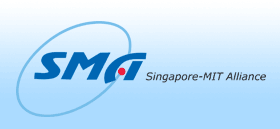Project Abstract:
With the achievement of carbon nanotubes (CNTs) synthesized in
macroscopic quantities, it has become possible to explore its
physical and chemical characteristics and further find applications.
Due to the high aspect ratio and nano-scale tips, CNTs own
the ability to emit a cold electron at relatively low voltages.
Depending on the method of production, CNTs may exhibit
metallic, semiconducting or insulating behavior. These interesting
properties allow CNTs having great potential for applications to
electron-field-emitting flat-panel displays, single-molecular
transistor, and molecular computing elements. To realize the above
applications of practical significance, however, it is highly crucial to
synthesize or pattern aligned (both horizontally and perpendicularly)
CNTs. In spite of receiving ever-increasing attention in the field of
aligned and/or micropatterned CNTs, there has been limited
research done thus far to create regular CNTS arrays, especially
horizontally aligned CNTs, efficiently and inexpensively in a mild
environment. Contact printing is an efficient method for pattern
transfer and has been successfully developed in micro-patterning.
The procedure is remarkably simple and convenient: once the stamp
is available, multiple copies of the patterns can be produced using
straightforward techniques. In this project, the conception of
microcontact printing was adopted and modified to use for CNTs
alignment.
|


